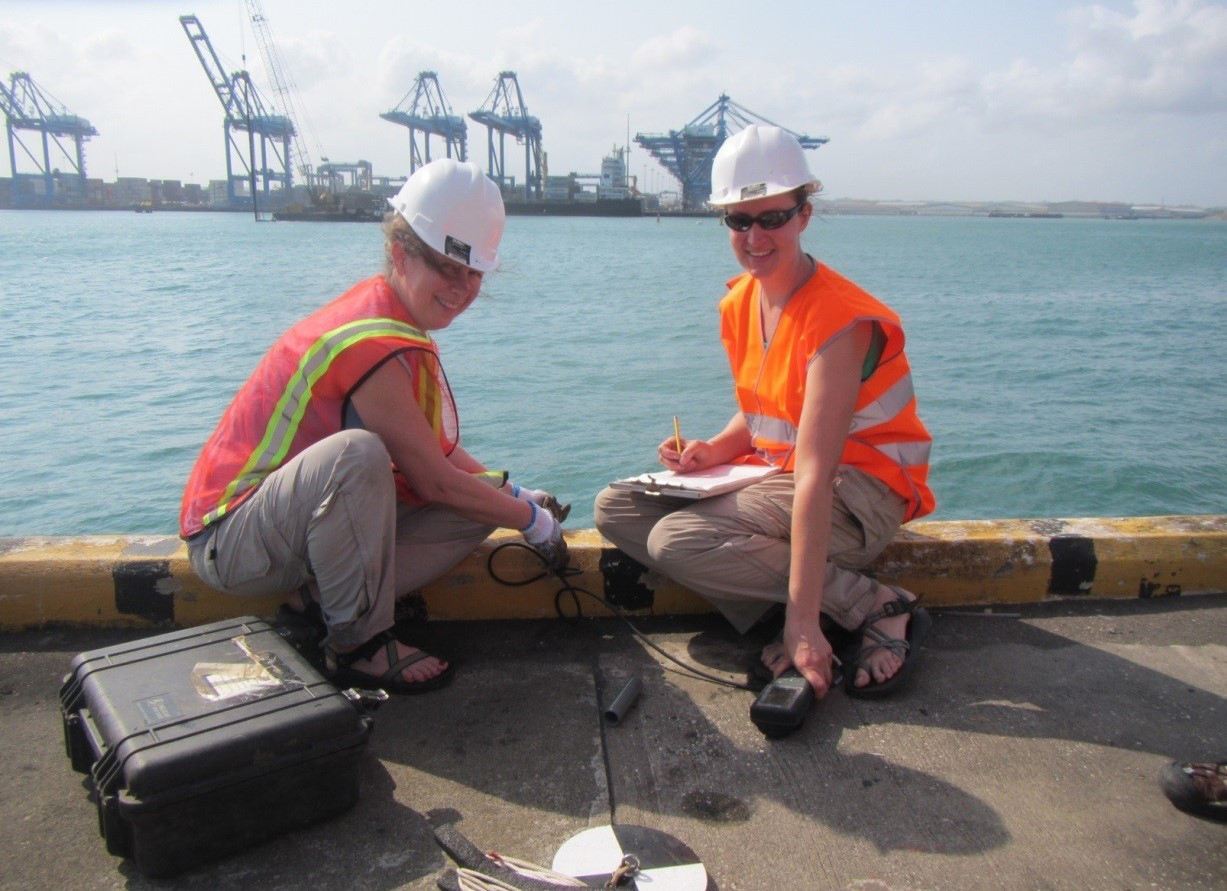
Biologists Linda McCann and Kristen Larson at the Colón Container Terminal on the Atlantic side of the Panama Canal. (Credit: Carmen SchlÖder/STRI)
by Marissa Sandoval
If you were to imagine the busiest shipping hot spots in the world, would you think of the Panama Canal? Since its creation in 1914, the Panama Canal has seen over 1.1 million transits. In 2020 alone, over 13,000 ship transits carried natural gas, petroleum, dry goods, and (you can probably guess) invasive species.
In a recently published study, biologists found just how busy sedentary marine invertebrates, or invertebrates that generally don’t move about, and their predators have been around the Panama Canal. Even though sedentary invertebrates don’t move much on their own as adults, you’d be surprised how many species appeared where they didn’t belong, thanks to high shipping intensity in Panama.
Because freshwater from Gatún Lake supplies the Panama Canal, fewer saltwater-loving marine organisms can survive the passage through it. But with almost 40 commercial ships a day traveling through the isthmus, scientists from the Smithsonian Tropical Research Institute (STRI), Smithsonian Environmental Research Center (SERC), and Temple University had strong reason to believe that the constant traffic would be enough for capable invaders to make it through. Even without a backbone, marine invertebrates are hardy!
Panama is a marine biologist’s dream location to do comparative field work. For one, the sites in the Atlantic and Pacific lie within an hour’s reach of each other. Additionally, the Pacific Ocean and the Atlantic Ocean are home to very different marine communities.
“On the Pacific we have six meters of a tidal range, which is huge, and on the Atlantic it’s only 50 centimeters,” said Carmen SchlÖder, a STRI researcher. The temperature can also vary. During the dry season on the Pacific side, SchlÖder added, temperature drops down to 55 degrees Fahrenheit. But on the Atlantic side, it remains in the mid-80s all year.
It proved a perfect opportunity for researchers to test ideas about marine invasions. Was there a difference in the number of invaders moving from one ocean to another? How well did invaders establish on either side of the canal?
The biologists predicted that there would be more invasions from the Atlantic to the Pacific. Here’s why.
Diversity Tips the Scale
The team first tackled investigating what organisms were present on both sides of the Panama Canal, and whether there was a difference in the number of invaders coming from one ocean to another. They predicted more invaders would come from the Atlantic and establish in the Pacific after reviewing reports on non-native species seen in Panama and scientific theory.
One idea is what scientists call the “evolutionary imbalance hypothesis” which looks at where invaders come from and go. It predicts that plants and animals from complex communities make good invaders in regions that are more uniform.
In other words, there’s less elbow room for invaders to fit in complex habitats, since a variety of plants and animals already fill the space.
“Species that have evolved in diverse communities with deep evolutionary lineages more easily invade areas that are less diverse,” said Mark Torchin, a lead STRI biologist.
So, more diverse areas—in this case, Panama’s Atlantic side—should export more invaders compared to less diverse areas.
To test this, researchers deployed 100 10×10-centimeter underwater panels at 10 different sites on both sides of the Panama Canal. Over the course of three months, marine organisms colonized those panels and the scientists then photographed and identified them. This study was the first of its kind in Panama to go beyond reporting which organisms are found along the coastline and use a standardized measure, the underwater PVC panels, to evaluate marine invasion dynamics.
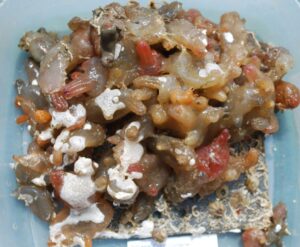
Sedentary invertebrates pile over each other on a fouling panel in the Atlantic Ocean. (Credit: Carmen SchlÖder/STRI)
When the scientists pulled up the panels, they discovered a vast mosaic of barnacles, worms, sea squirts, bivalves and bryozoans adorning them.
The results were astounding. Not only were the panels “massively colonized,” as SERC researcher Linda McCann put it, but there were “dramatically more non-natives making it to the Pacific.”
Nearly 30% of the total 60 species detected in the Pacific were non-native organisms. Compare that to just 13% of the 85 species identified as non-native on the Atlantic side. The exchange of invasive species amounted to an eightfold difference between the Atlantic and the Pacific, with more species transferred from the Atlantic. The disparity of invasions solidified the biologists’ original predictions that the Atlantic exported more invaders to the Pacific.
During this process, the team worked closely with the Panama Maritime Authority and the Panama Canal Authority to create a non-native species database. It’s called Pan-NEMO, and is an extension of the Smithsonian’s larger non-native species database called NEMESIS (National Estuarine and Marine Exotic Species Information System). So far, Pan-NEMO contains 16 species that were previously not documented in Panama.
Predators Pick Off Invaders in the Pacific
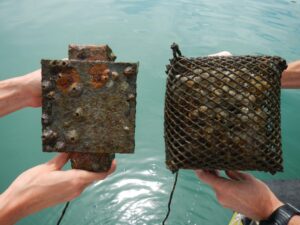
A fouling panel picked clean by Pacific predators (left), and a caged fouling panel covered with invertebrates that fish and other predators couldn’t reach (right). (Credit: Carmen SchlÖder/STRI)
Next, the research team investigated how well both sides of the canal were able to respond to invasions. Are some communities more resistant to invaders taking hold?
In a clever hack, the research team devised a second experiment to look at the effects of predators. Just as a metal mesh dome protects our food at outdoor picnics from flies and wasps, a plastic mesh cage around the panel keeps out predators like fish.
At the same sites as their first experiment, researchers caged some panels and left others exposed for three months.
They expected to find more coverage on the protected panels, since predators couldn’t feast on them. But the panels in the Atlantic hardly changed, whereas the protected panels in the Pacific looked strikingly different.
By removing the predators in the Pacific, the biomass on the panels nearly tripled. Over half the coverage was from an invasive invertebrate that didn’t even appear in the first experiment! Protected from being bitten off, the large, solitary sea squirt invader Ascidia sydneiensis thrived in the caged environment.
Predators in the Pacific help keep invaders from gaining too much of a foothold.
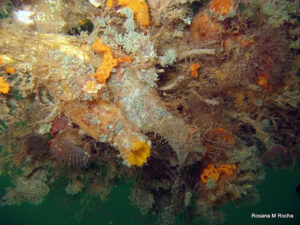
The non-native sea squirt Ascidia sydneiensis growing on a PVC panel underwater among other marine invertebrates. (Credit: Rosana M. Rocha)
“The diversity shapes what gets here. But once those species are established, there are other factors that shape their distribution and abundance,” said Torchin. This is the case in the Pacific. “Predators…are really driving the abundance of invaders and shaping community structure.”
So even though the Pacific side saw more invasions, the team’s results suggested that predators limited the distribution and abundance of invaders there, but not in the Atlantic.
The implications of this study for conservation reach far beyond the Panama Canal. Steps to protect natural environments and predators help maintain the integrity of community structure and resist invasions. As our reliance on the shipping industry grows, mitigating the spread of introduced species will become more necessary. That’s especially true as the shipping industry and even ships themselves grow larger.
Finding More Pan-NEMOs?
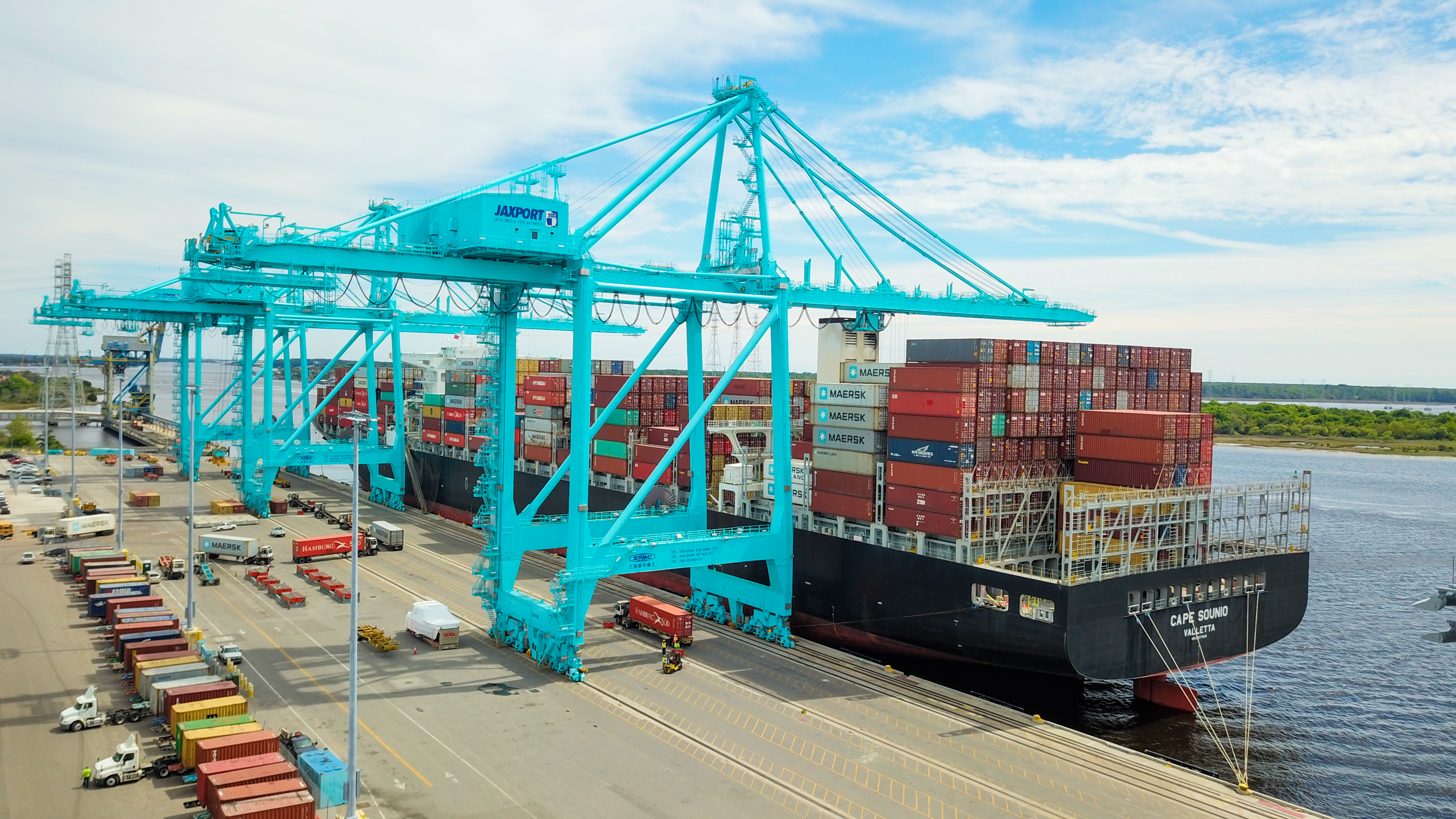
This “Neo-Panamax” ship set a record for the largest ship to dock in Jacksonville, Florida, after transiting the Panama Canal. (Credit: JAXPORT. Creative Commons License)
In 2016, two years after its 100th birthday, the Panama Canal wrapped up a major expansion. Ships considered “Neo-Panamax ships” or “New Panamax ships” can now cross the isthmus in addition to the regular “Panamax” ships. Neo-Panamax ships can carry nearly three times as much as Panamax ships, with the record set at 14,863 20-foot containers.
Since field work for the study finished prior to the expansion of the Panama Canal, the new question becomes: How will the massive Neo-Panamax ships affect invasion dynamics?
“It’ll be interesting to see if there will be an uptick in invasions with widening of the canal,” said McCann. “Having seen the canal prior to expansion…if you were able to stand on the edge, you could touch the ships as they went by. It was such a tight fit.” Is it the same with the larger Neo-Panamax ships?
Larger ships usually mean more opportunity for invaders to hitch a ride. Though this study was the first to quantify the exchange of invaders in the Panama Canal, it definitely won’t be the last.

